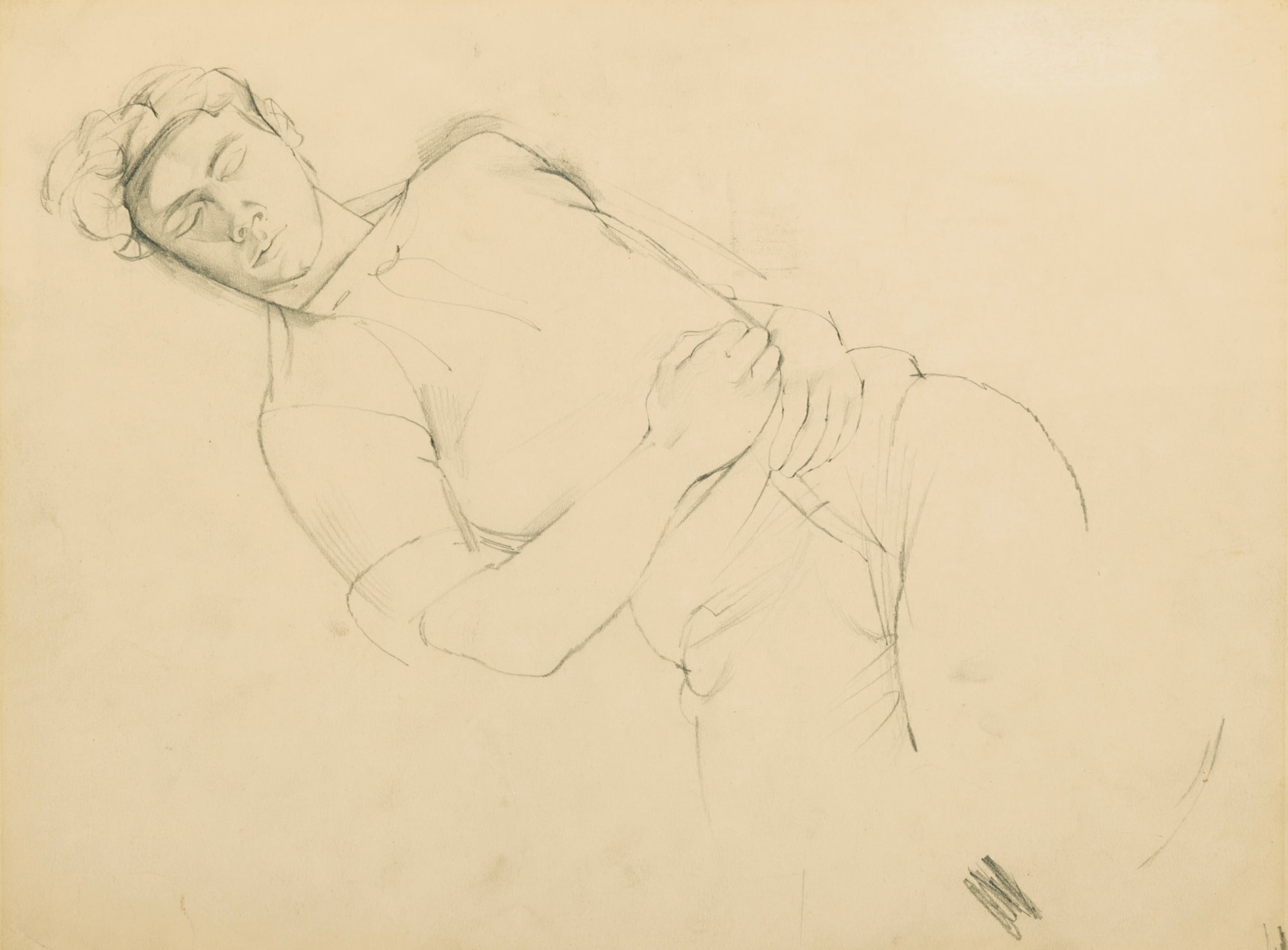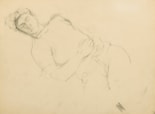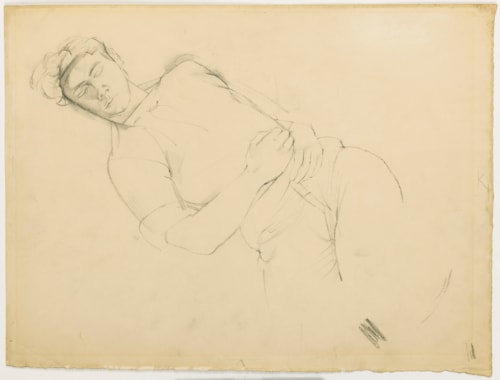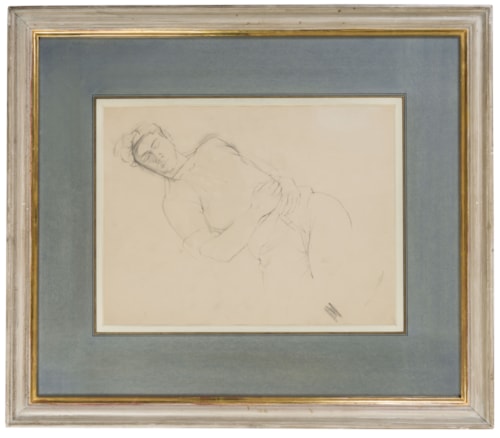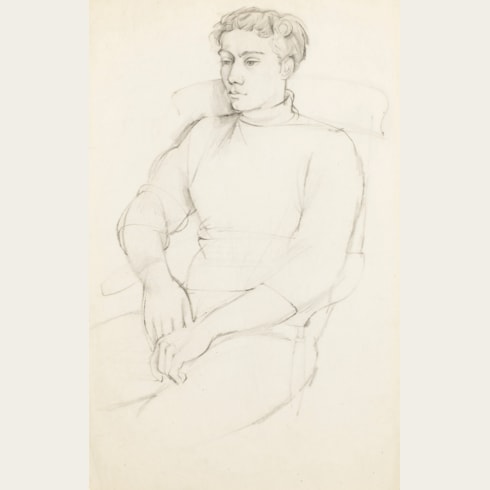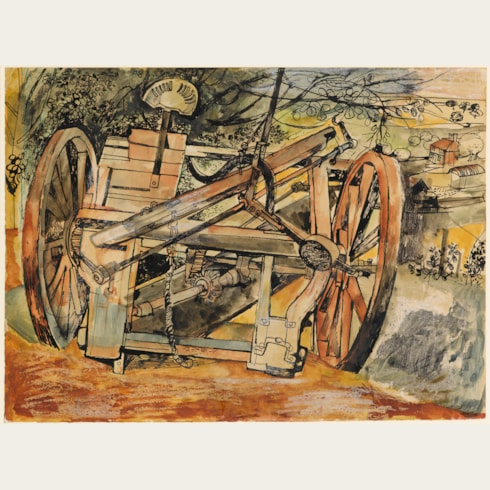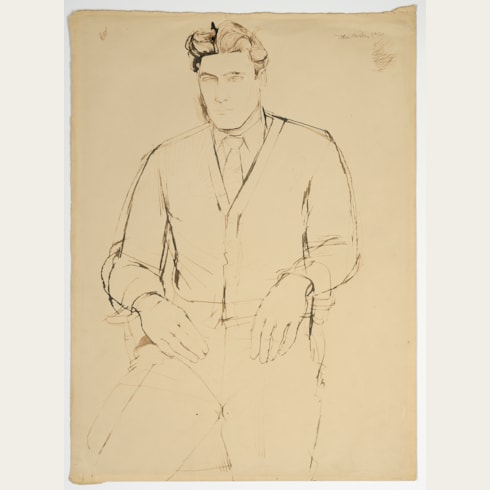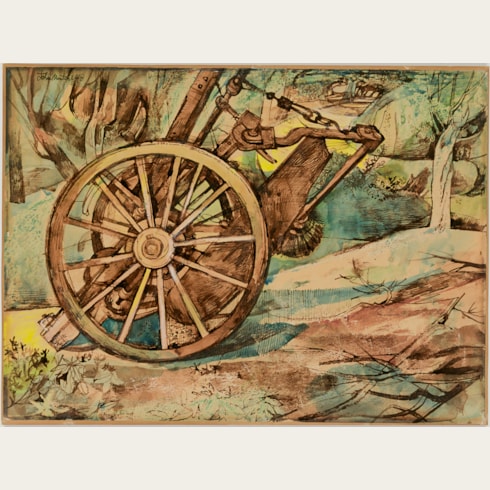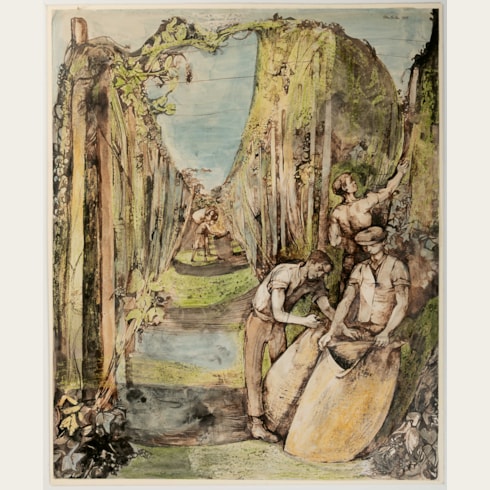John MINTON
(Great Shelford 1917 - London 1957)
Study of a Young Man Asleep
Sold
Pencil on buff paper.
283 x 384 mm. (11 1/8 x 15 1/8 in.) [sheet]
283 x 384 mm. (11 1/8 x 15 1/8 in.) [sheet]
John Minton’s portrait studies in pencil - ‘superb examples at their best of unforced draughtsmanship’, in the words of one friend and critic - are among the finest of his drawings. A pen and ink study of a similar subject, depicting Minton’s friend and lover Kevin Maybury asleep, was sold at auction in London in 2011, while another drawing of the same sitter, also asleep, was in the John Constable collection and recently appeared on the London art market. The intimacy evident in the present sheet suggests that it may likewise depict Maybury, whom Minton met when he was designing stage sets at the Royal Court Theatre in the summer of 1956. An Australian carpenter, Maybury worked in the scenery department at the theatre, and eventually moved in with Minton at his home in Apollo Place in Chelsea. As Minton’s biographer has written, ‘[Maybury] seemed rather amazed to be taken up by this famous painter who drew him into a more exciting social world than he had previously experienced. To some of Minton’s friends it seemed that Kevin was his white hope, the person who was going to keep him off the bottle…The presbyterian streak in Kevin Maybury’s nature aroused in Minton bemused affection.’ Minton made several late drawings of Maybury, as well as a finished portrait in oils, which is now in the Tate. It was Kevin Maybury who discovered the artist’s body after his suicide, having taken an overdose of the barbiturate Tuinal.
A related drawing of the same composition was with the Jason & Rhodes Gallery in London in 1995.
A related drawing of the same composition was with the Jason & Rhodes Gallery in London in 1995.
Although he had only a relatively brief career before his death at the age of thirty-nine, John Minton was enormously prolific and achieved a great deal of success in his lifetime. Between 1945 and 1956 he had eight one-man shows, mainly at the Lefevre Gallery in London, as well as taking part in a number of group shows and the Royal Academy Summer exhibitions. Alongside his output as a painter and draughtsman, he provided numerous illustrations for books, book jackets, magazines and advertisements, and also designed posters, wallpaper and stage sets.
While he enjoyed considerable early success, by the 1950’s Minton’s work was becoming overshadowed by that of other artists in his circle, notably Lucian Freud and Francis Bacon. As a friend of his later wrote, ‘He saw himself as overtaken by fashions in art – abstract expressionism among others – for which he had no liking. While others of his contemporaries – Lucien Freud, Francis Bacon, Keith Vaughan - held their ground and came through, Minton saw himself as obsolete, as eccentric and old-fashioned as Edward Lear. He could not come to terms with new developments and he lost faith in his own talent…He was, I suppose, one of those kingfisher-like specimens whose bright plumage briefly glinted then was gone. It might, perhaps, have been different in other circumstances; a little more patience and he could have survived the disorienting shifts in taste.’
Minton devoted much of his later career to teaching, in particular at the Royal College of Art, and was a popular and inspirational figure among his students. As Frances Spalding has written of him, ‘Minton’s virtuoso performances with pencil or pen and ink commended him as a teacher. His students aspired to his dexterity and adopted his devices.’ Minton died, by his own hand, in January 1957.
Provenance
New Grafton Gallery, London, in 1973
Colin Clark, London
Thence by descent.
Colin Clark, London
Thence by descent.

